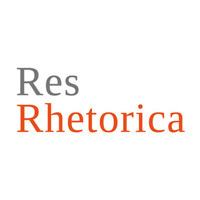Rhetoric in Digital Communication: Merging Tradition with Modernity
Rhetoric in Digital Communication: Merging Tradition with Modernity
Author(s): Anna BendratSubject(s): Language and Literature Studies, Communication studies
Published by: Polskie Towarzystwo Retoryczne
Keywords: digital rhetoric;Kenneth Burke;rhetorical situation;dramatism;pentad;Facebook;
Summary/Abstract: Looking into the definition of rhetoric in the digital space, one often encounters the view that rhetoric is too remote or too “ancient” to be used as a conceptual, theoretical or practical framework for researching digital media. However, a substantial body of contemporary media research applies the theory of rhetoric, using a modern conceptual apparatus (e.g. cognitive theories of metaphor). Based on Kenneth Burke’s model of the pentad, the article aims to show that media messages in the digital environment are based on the notion of the rhetorical situation and demonstrate that the rhetorical apparatus has a crucial role in discerning the ways to modify the discourse space in human-computer-human communication. The source of modification in the traditional model of a rhetorical situation is the interactive nature of communication in digital media and the fact that the recipient [agent a] is bestowed with the role of an active participant who can influence the content of the message. Thanks to the use of the rhetorical model of pentad, the argument goes that in contrast to traditional media, modifications in the model act 1 → agent → agency → act 2 are possible and they result from the inclusion of external participants [agent b] and changes in the ontological status of the digital medium from the role of an intermediary to an active participant in the communication process [agent c].
Journal: Res Rhetorica
- Issue Year: 6/2019
- Issue No: 3
- Page Range: 111-124
- Page Count: 14
- Language: English

